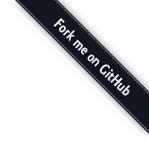BioT2Ex currently supports 15 bioinformatics tools, listed below.
If you would like another to be added, you can submit your proposal on the Contribute page.These tools are linked to the BioTreasury database.
- RNA-seq data analysis tools
- ChIP-seq data analysis tools
- WES data analysis tools
Click the tool name to go to the BioT2Ex documentation for that tool.
| Tool Name | Description | Operating environment |
|---|---|---|
| edgeR | Differential expression analysis of RNA-seq expression profiles with biological replication. Implements a range of statistical methodology based on the negative binomial distributions, including empirical Bayes estimation, exact tests, generalized linear models and quasi-likelihood tests.Tool link | R |
| DESeq2 | Estimate variance-mean dependence in count data from high-throughput sequencing assays and test for differential expression based on a model using the negative binomial distribution.Tool link | R |
| limma | Data analysis, linear models and differential expression for microarray data.Tool link | R |
| clusterProfiler | This package supports functional characteristics of both coding and non-coding genomics data for thousands of species with up-to-date gene annotation. It provides a univeral interface for gene functional annotation from a variety of sources and thus can be applied in diverse scenarios. It provides a tidy interface to access, manipulate, and visualize enrichment results to help users achieve efficient data interpretation. Datasets obtained from multiple treatments and time points can be analyzed and compared in a single run, easily revealing functional consensus and differences among distinct conditions.Tool link | R |
| NOISeq | Analysis of RNA-seq expression data or other similar kind of data. Exploratory plots to evualuate saturation, count distribution, expression per chromosome, type of detected features, features length, etc. Differential expression between two experimental conditions with no parametric assumptions.Tool link | R |
| ChIPseeker | This package implements functions to retrieve the nearest genes around the peak, annotate genomic region of the peak, statstical methods for estimate the significance of overlap among ChIP peak data sets, and incorporate GEO database for user to compare the own dataset with those deposited in database. The comparison can be used to infer cooperative regulation and thus can be used to generate hypotheses. Several visualization functions are implemented to summarize the coverage of the peak experiment, average profile and heatmap of peaks binding to TSS regions, genomic annotation, distance to TSS, and overlap of peaks or genes.Tool link | R |
| DiffBind | Compute differentially bound sites from multiple ChIP-seq experiments using affinity (quantitative) data. Also enables occupancy (overlap) analysis and plotting functions.Tool link | R |
| MACS | A novel algorithm, named Model-based Analysis of ChIP-Seq (MACS), for identifying transcript factor binding sites. MACS captures the influence of genome complexity to evaluate the significance of enriched ChIP regions, and MACS improves the spatial resolution of binding sites through combining the information of both sequencing tag position and orientation. MACS can be easily used for ChIP-Seq data alone, or with control sample with the increase of specificity.Tool link | Python |
| MutSigCV | MutSigCV significantly identify mutated genes in large-scale cancer genome research facilitated by massively parallel sequencing technology.Tool link | Python |
| RSEM | RSEM is a software package for estimating gene and isoform expression levels from RNA-Seq data. The RSEM package provides an user-friendly interface, supports threads for parallel computation of the EM algorithm, single-end and paired-end read data, quality scores, variable-length reads and RSPD estimation. In addition, it provides posterior mean and 95% credibility interval estimates for expression levels. For visualization, It can generate BAM and Wiggle files in both transcript-coordinate and genomic-coordinate. Genomic-coordinate files can be visualized by both UCSC Genome browser and Broad Institute’s Integrative Genomics Viewer (IGV). Transcript-coordinate files can be visualized by IGV. RSEM also has its own scripts to generate transcript read depth plots in pdf format. The unique feature of RSEM is, the read depth plots can be stacked, with read depth contributed to unique reads shown in black and contributed to multi-reads shown in red. In addition, models learned from data can also be visualized. Last but not least, RSEM contains a simulator.Tool link | Python |
| MutPlanning | MutPanning is designed to detect rare cancer driver genes from aggregated whole-exome sequencing data. Most approaches detect cancer genes based on their mutational excess, i.e. they search for genes with an increased number of nonsynonymous mutations above the background mutation rate. MutPanning further accounts for the nucleotide context around mutations and searches for genes with an excess of mutations in unusual sequence contexts that deviate from the characteristic sequence context around passenger mutations.Tool link | Python |
| RF5 | R packageTool link | Python |
| dNdScv | The package contains functions to quantify dN/dS ratios for missense, nonsense and essential splice mutations, at the level of individual genes, groups of genes or at whole-exome level. The dNdScv method was designed to detect cancer driver genes (i.e. genes under positive selection in cancer) on datasets ranging from a few samples to thousands of samples, in whole-exome/genome or targeted sequencing studies.Tool link | Python |
| OncodriveCLUST | OncodriveCLUST is a driver gene recognition software that analyzes gain-of-funciton mutations, which converge on specific regions of proteins and may signal positive selection in tumor cell growth advantages and clonal evolution. These mutations are analyzed to predict potential driver genes.Tool link | Python |
| OncodriveFM | OncodriveFM(functional mutation) is predicted on the basis of the harmfulness of the functional mutation, that is, if a gene has a mutation affecting the functional domain, the gene can be used as a candidate driver geneTool link | Python |
